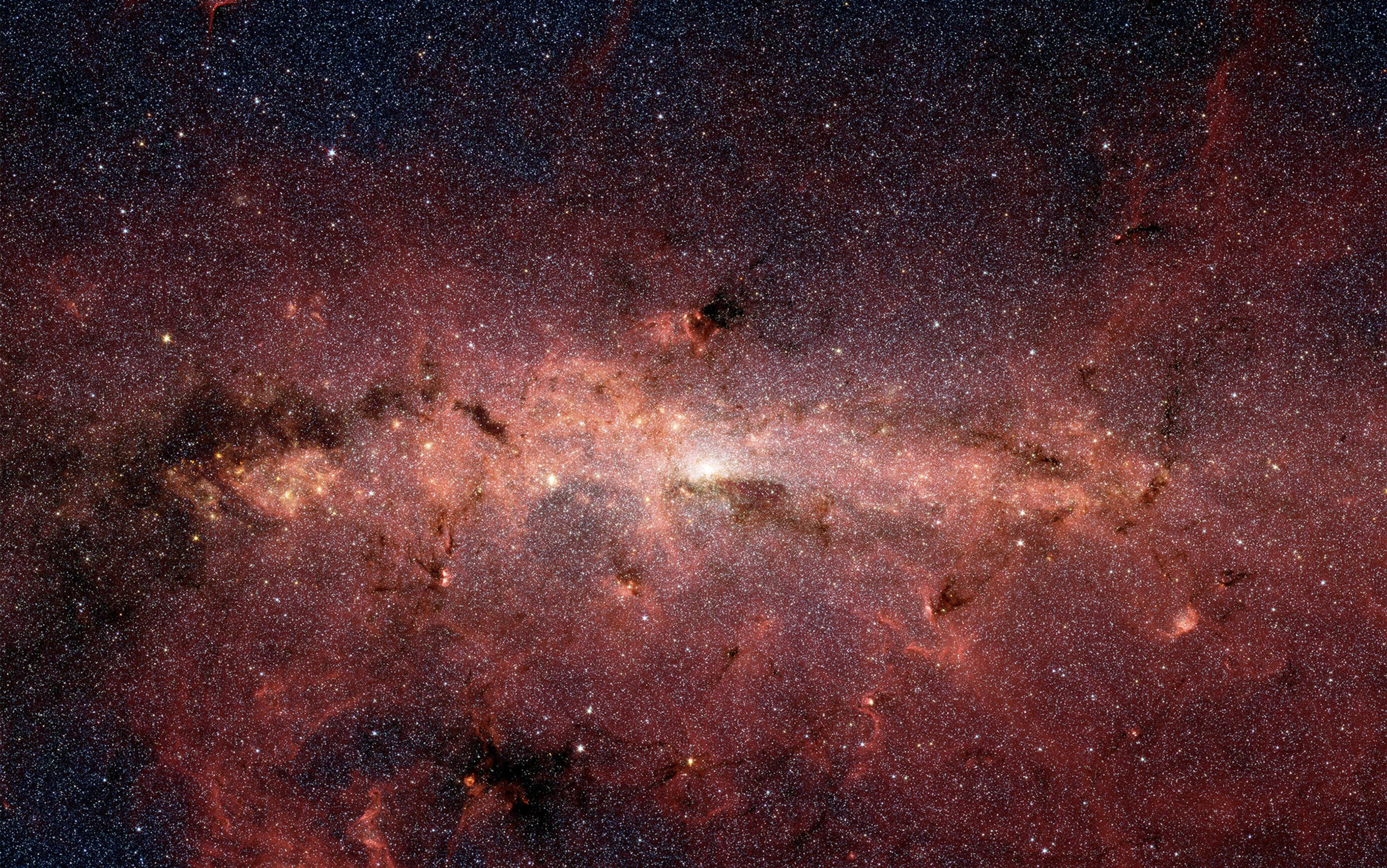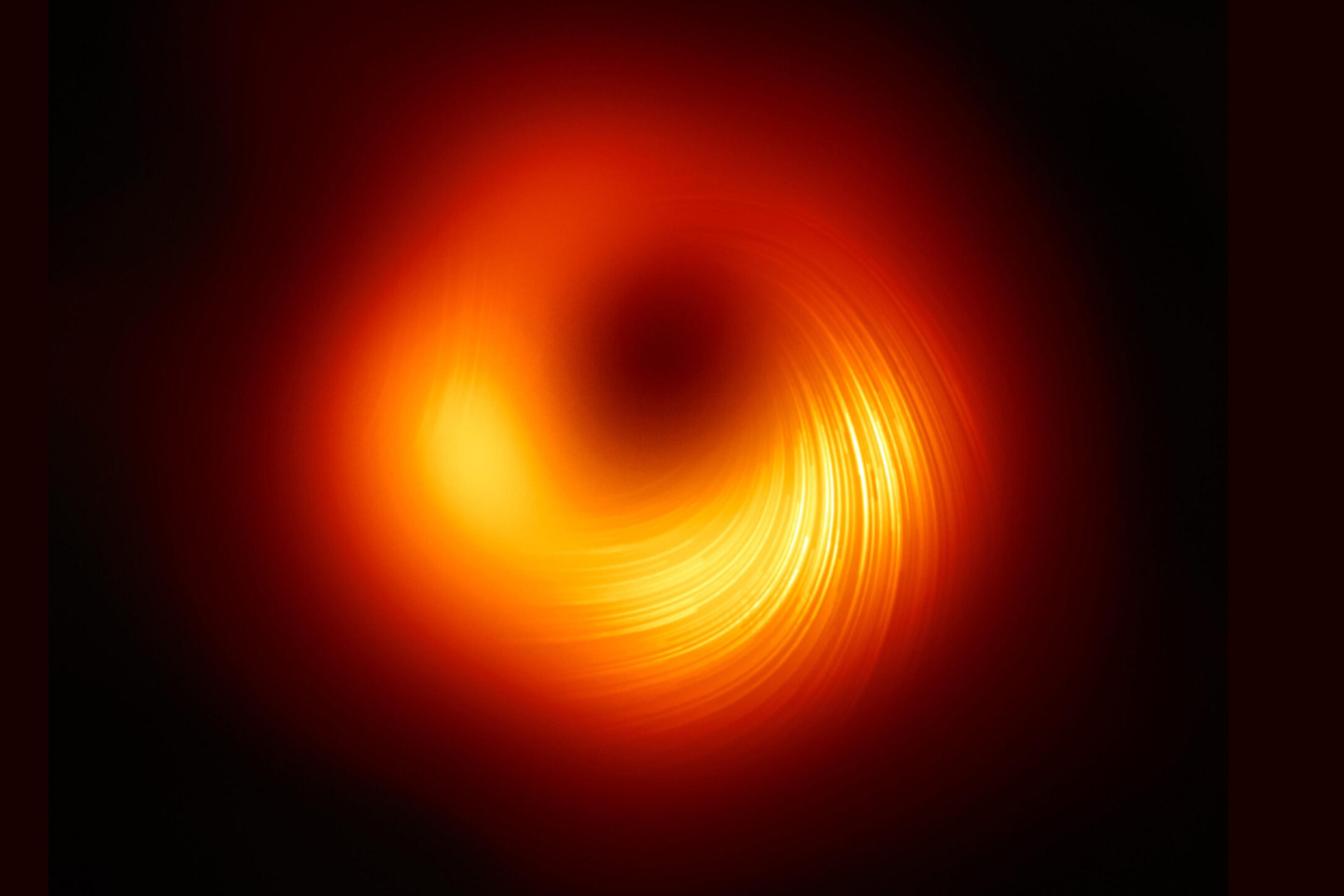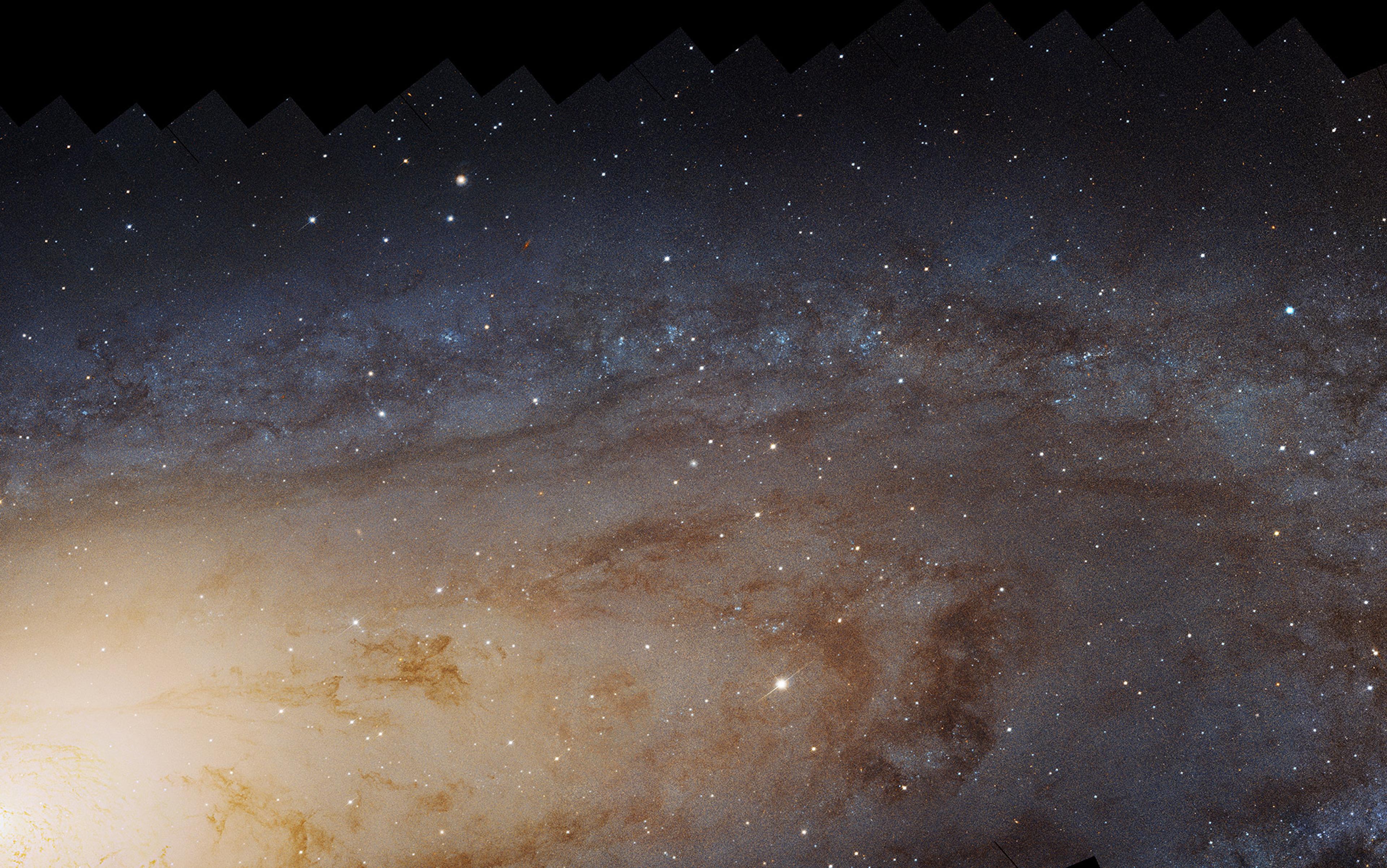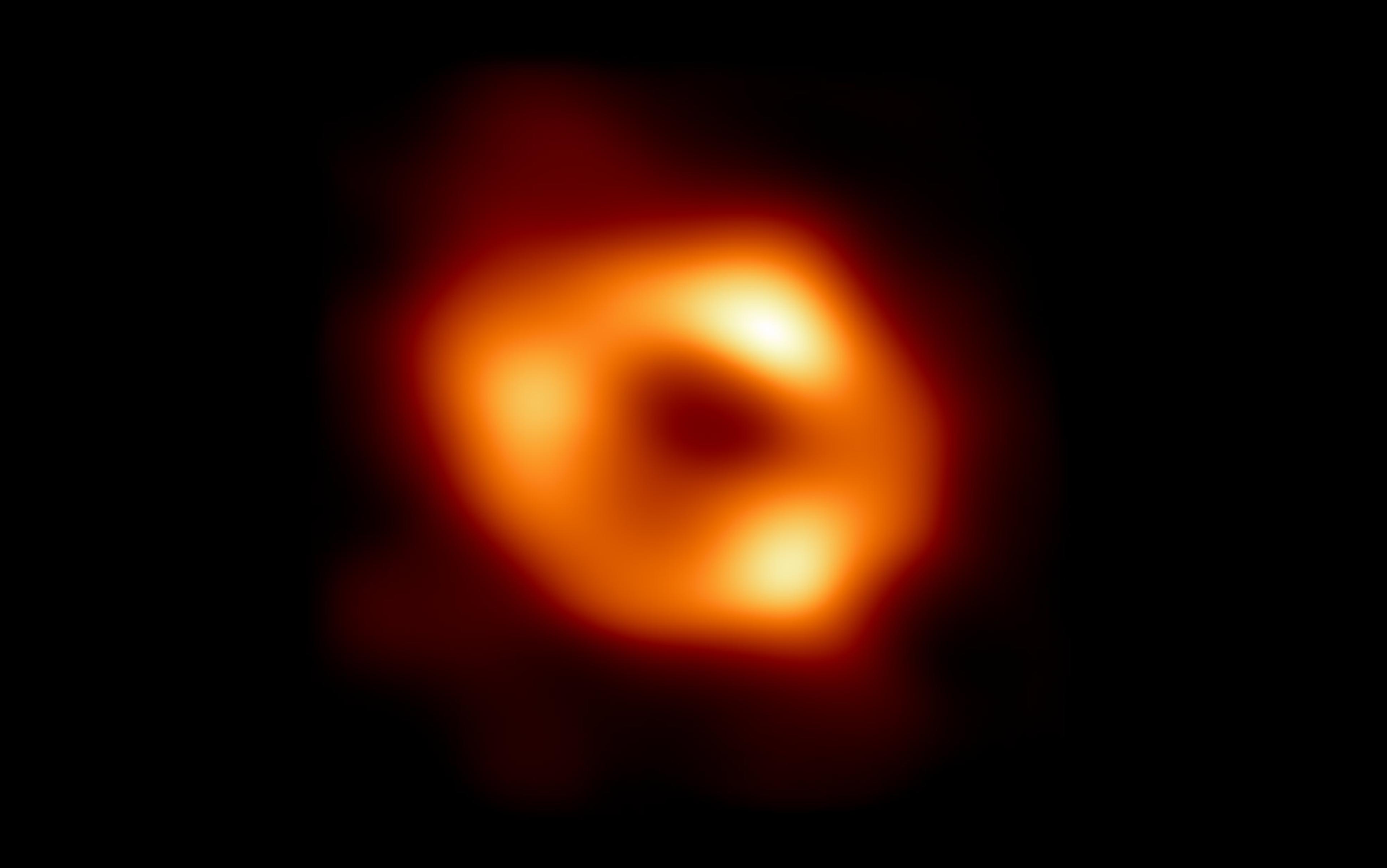A billion years ago, two dancing black holes make a final spin, merge, and – in a matter of seconds – release a cataclysmic amount of energy. Much as a falling pebble spreads waves on the surface of a still lake, the merger initiates gravitational waves in the space-time continuum. Fast-forward to planet Earth and the year 2015. After an immense journey, the gravitational waves from the black-hole merger pass through our solar system. On the morning of 14 September, they oh-so-slightly wiggle the arms of the twin Laser Interferometer Gravitational-Wave Observatory (LIGO) detectors in Louisiana and Washington state. A pattern of light-waves shifts in a distinctive, long-sought way. A computer sounds the alarm.
Niayesh Afshordi at the University of Waterloo in Canada first heard of LIGO’s seminal detection over lunch in a bistro. It was late 2015 and still weeks to go until the results were officially released. But rumours were buzzing, and a colleague who had seen the unpublished paper spilled the beans. Afshordi, an astrophysicist who also works at the Perimeter Institute in Waterloo, instantly appreciated the importance of the news – both for the physics community at large, and for his own unconventional theory about the construction of the Universe.
‘I had an existential crisis at some point. I thought all the problems in cosmology had been solved,’ Afshordi recalled. ‘But then I came up with this idea that dark energy is made by black holes.’ Studies of distant stellar explosions and other lines of evidence show that our universe grows at an accelerating pace, but nobody knows the cause. Matter alone cannot have this effect, so cosmologists blame the expansion on a peculiar type of energy, called dark energy. Its origin and nature were, and are, a mystery.
In 2009, Afshordi, together with his colleagues Chanda Prescod-Weinstein and Michael Balogh, put forward a theory according to which black holes seed a long-range field that mimics dark energy. The field spills out from black holes and spans through the Universe. It’s an intriguing explanation for the origin of dark energy and, by Afshordi’s calculations, the number of black holes estimated to exist should create just about the right amount of field energy to fit the observations.
But Afshordi’s idea overthrows what physicists believed they knew about black holes. In Albert Einstein’s theory of general relativity, the event horizon of a black hole – the surface beyond which there is no escape – is insubstantial. Nothing special happens upon crossing it, just that there is no turning around later. If Afshordi is right, however, the inside of the black hole past the event horizon no longer exists. Instead, a Planck-length away from where the horizon would have been, quantum gravitational effects become large, and space-time fluctuations go wild. (The Planck length is a minuscule distance: about 10-35 metres, or 10-20 times the diameter of a proton.) It’s a complete break with relativity.
When he heard of the LIGO results, Afshordi realised that his so-far entirely theoretical idea could be observationally tested. If event horizons are different than expected, the gravitational-wave bursts from merging black holes should be different, too. Events picked up by LIGO should have echoes, a subtle but clear signal that would indicate a departure from standard physics. Such a discovery would be a breakthrough in the long search for a quantum theory of gravity. ‘If they confirm it, I should probably book a ticket to Stockholm,’ Afshordi said, laughing.
Quantum gravity is the missing unification of general relativity with the quantum field theories of the standard model of particle physics. If just thrown together, the two theories lead to internal contradictions, and fail to make sense. Black holes are one of the most studied examples for such a contradiction. Use quantum field theory near the horizon and you find that the black hole emits particles, slowly evaporating. Those particles carry away mass but, as Stephen Hawking demonstrated in the 1970s, they cannot carry information about what formed the black hole. And so, if the black hole evaporates entirely, all the information about what fell in has been destroyed. In quantum field theory, however, information is always preserved. Something in the mathematics, therefore, doesn’t fit correctly.
The culprit, most physicists think, is that the calculation doesn’t take into account the quantum behaviour of space and time because the theory for this – quantum gravity – is still unknown. For decades, physicists thought that the quantum gravitational effects necessary to solve the black-hole conundrum were hidden behind the event horizon. They thought that it is only near the singularity, at the centre of the black hole, that the effects of quantum gravity become relevant. But recently, they have had to rethink.
In 2012, a group of researchers from the University of California, Santa Barbara, found an unexpected consequence of the currently favoured idea that information somehow escapes with the radiation from a black hole. To make the idea work, large deviations from general relativity are required, not only near the singularity but also at the event horizon. Those deviations would create what the researchers dubbed a ‘black hole firewall’, a barrier of high energy just outside the horizon.
Such a firewall (if it exists) would become noticeable only for an infalling observer, and would not emit observable signatures that could show up in our telescopes. However, the firewalls lent support to Afshordi’s earlier idea that black holes create a field that acts as dark energy. If that was so, then the near-horizon region of black holes should be very different from what general relativity predicts; a firewall that solves the black hole information-loss problem could be one effect of that deviation. Afshordi’s proposal for how to modify general relativity might therefore hold the key to resolving the tension between quantum theory and general relativity. It was an idea that wouldn’t let him go.
Instead of a splash followed by dissipating ripples, the gravitational waves should come as faint echoes of the original event
When he learned of LIGO’s first detection, Afshordi began to explore whether the gravitational waves emitted from a black-hole merger could reveal intimate details about what happens near the black-hole horizon. At first it seemed too much to hope for. ‘I didn’t really think we could see quantum gravity effects in the gravitational-wave signal because we had already looked in so many places,’ Afshordi said. ‘But I changed my mind about this.’
What made Afshordi reconsider was work by Vítor Cardoso and colleagues at the Instituto Superior Técnico in Portugal on gravitational-wave echoes from black holes. Cardoso had laid out on general grounds that a merger of two objects that are compact but do not have an event horizon would produce gravitational waves very similar to those of black holes – similar, but not identical. The key feature indicating the horizon’s absence, Cardoso argued, would be a periodic recurrence in the signal from the merger. Instead of a single peak followed by a ringdown (think a big splash on a pond, and then rapidly dissipating ripples), the gravitational waves should come as a series of fading pulses – fainter echoes of the original event. Afshordi found that the near-horizon modification described by his theory would cause exactly such echoes. Moreover, he could calculate their recurrence time as a function of the final black hole’s mass, allowing a precise prediction.
Nobody had ever sought such a signal before, and finding it would not be easy. So far there are only two public, well-defined gravitational-wave detections from LIGO. Together with a collaborator, Afshordi analysed the LIGO data for traces of echoes. By comparing the openly available recordings to random noise, they found an echo at the calculated recurrence time. The statistical significance is not high, however. In scientific terms, it has an estimated significance of 2.9 sigma. Such a signal can be caused by pure noise with a chance of about a one-in-200. In physics, an event of such low confidence is interesting but does not amount to a discovery.
The LIGO experiment is really just getting started, however. The most remarkable thing about the first two gravitational wave events is that the facilities were able to record them at all. The technological challenges were tremendous. Each site, both in Louisiana and in Washington state, has an interferometer with two perpendicular arms about 4 kilometres long in which a laser beam bounces back and forth between mirrors; when recombined, the beams interfere with each other. Interference of the laser’s light-waves is sensitive to deformations in the arms’ relative length as little as a thousandth the diameter of a proton. That is the level of sensitivity required to pick up gravitational effects of colliding black holes.
A gravitational wave passing through the interferometer deforms both arms at different times, thereby skewing the interference pattern. Requiring an event to be recorded at both sites provides protection against false alarms. By design, LIGO detects gravitational waves best at wavelengths of hundreds to thousands of kilometres, the range expected for black-hole mergers. Other gravitational-wave detectors are planned to cover different parts of the spectrum, each tuned to different types of phenomena.
Gravitational waves are an unavoidable prediction of general relativity. Einstein recognised that space-time is dynamic – it stretches, it curves, and it wiggles in response to gravitational disturbances. When it wiggles, the waves can travel freely into the far distance, carrying away energy and manifesting themselves by a periodic expansion and contraction of space in orthogonal directions. We have long had indirect evidence for gravitational waves. Because they carry away energy, they cause a small but measurable decay in the mutual orbit of binary pulsars. This effect was first observed in the 1970s, and was awarded a Nobel Prize in 1993. But until LIGO’s detection, we had no direct evidence for the existence of gravitational waves.
This is basic research at its finest. What kind of black hole and compact stellar systems are there? Where are they within the galaxies?
LIGO’s first event – the September 2015 detection that so excited Afshordi – was remarkable, and not only because it happened just a few days after a long-planned instrumental upgrade. It stood out also because the merging black holes were so heavy, with masses estimated at 29 and 36 times the Sun’s mass. ‘A lot of people expected the black hole events to have lower masses,’ said Ofek Birnholtz, a member of the LIGO collaboration’s group on compact binary coalescence and a physicist at the Max Planck Institute for Gravitational Physics in Germany. The strikingly clean signal, together with the collaboration’s openness in sharing the data, has been an inspiration for physicists in other communities who, like Afshordi, are now exploring how to use the new observations for their own work.
On 26 December 2015, LIGO recorded a second event. The age of gravitational-wave astronomy had officially begun, after many years of slow progress and false starts. ‘Some of my PhD colleagues had left the field of gravitational-wave astronomy,’ Birnholtz said and added, laughing, ‘but are returning because suddenly it’s hot again.’ This is uncharted territory, basic research at its finest. What kind of black hole and compact stellar systems are there? Where are they within the galaxies? What do the gravitational waves reveal about their origins? If a neutron star merges with a black hole, what can be learned about matter in such extreme conditions? Do black holes behave the way that our calculations predict?
Afshordi’s theory of black holes and dark energy is just one example of the kinds of enquiries that are now possible. A wealth of information is waiting to be explored, openly, around the world.
A few days after Afshordi’s result appears on the open-access server arXiv.org, members of the LIGO collaboration scrutinise the analysis. It takes only a few weeks until they publish a reply, criticise the methodology, and call for different statistical tools. Birnholtz is one of the authors of that criticism.
‘The claim is surprising,’ said Birnholtz. ‘I have no prior as to whether or not there should be echoes. That’s physics nobody can guess at. But I do have a strong intuition, working with LIGO data, that the amplitude is probably not large enough to claim such a significance at this stage.’ Birnholtz has suggestions for how to improve the analysis, but avoids making statements about the chances of confirming the result. Alex Nielsen, another member of the LIGO collaboration and one of Birnholtz’s co-authors, reiterates the need for caution: ‘As members of the LIGO collaboration, we have to be very careful about what statements we make in public, before we have full collaboration approval. But the data is public and people can do with it what they want.’
The LIGO collaboration has an open science centre, where data recorded for one hour around the time of confirmed gravitational events is publicly available. ‘People are welcome to use it and contact us for any questions,’ Birnholtz said. ‘If they find anything interesting, they can share it with us, and we can work on it together. This is part of the scientific experience.’
The collaboration has several thousand members worldwide, distributed at more than a hundred institutions. They meet twice a year; the most recent meeting was in March in Pasadena, California. Some members of the collaboration are now trying to reproduce Afshordi’s analysis. Birnholtz expects the effort to take several months. ‘The result might be disappointing,’ he warned. ‘Not in that it says there are no echoes, but that we can’t say whether there are echoes.’ Gravitational-wave astronomy is still a field in its infancy, though, and much more data are on the way. The collaboration estimates that by the completion of the third observing run in 2018, LIGO is likely to have made 40 high-quality detections of black-hole mergers. Each will offer another opportunity to test Afshordi’s theory.
Because they interact so weakly and deposit so little energy as they pass by, gravitational waves are exceedingly difficult to measure. The deformation they cause is tiny, and enormous care is necessary to extract a clean signal. The discovery threshold used by the LIGO collaboration is 5 sigma, corresponding to a chance of less than one in 3 million that the signal was coincidence, which is far above the significance level of Afshordi’s signal. The weak interaction of gravitational waves, however, is also the reason why they are excellent messengers. Unlike particles or light, they are barely affected on their way to us, carrying with them pristine information about where and how they were generated. They allow entirely new precision tests of general relativity in a regime that has never before been explored.
Cosmologists would also want to look much more closely at the implications of this new explanation for dark energy
If black hole echoes should be confirmed, that would almost certainly indicate a stark deviation from general relativity. Finding echoes would not uniquely confirm Afshordi’s theory that black holes seed dark energy. But some truly novel idea would be needed to explain it. ‘I don’t know of such echoes in any simulation that we have done to date,’ Birnholtz said. ‘If we were to confirm that there was an echo, that would be very interesting. We would have to look into what could produce such an echo.’
Afshordi has research plans in case the statistical significance of his signal increases. He wants to improve his model of black-hole mergers, and run a numerical simulation to support the analytical estimate of what the echoes should look like. The next step would then be to better understand the underlying theory of space-time that could give rise to such a behaviour of the black-hole horizon. Cosmologists would also want to look much more closely at the implications of this new explanation for dark energy.
Afshordi is aware just how speculative it is to alter general relativity so drastically. But he’s a rebel with a mission: ‘I want to encourage people to keep an open mind and not to dismiss ideas because they don’t match their preconceived notions.’ With LIGO exposing the workings of the Universe in ways never before studied, a lot of preconceived notions may soon be set aside.






